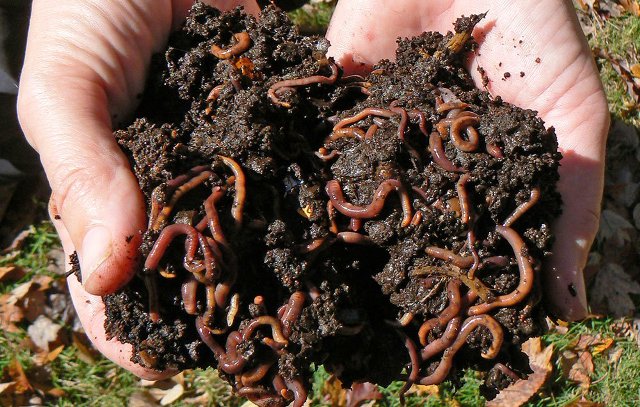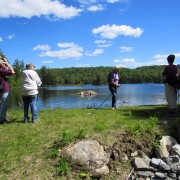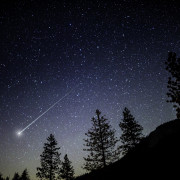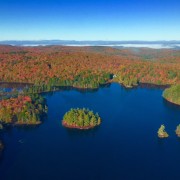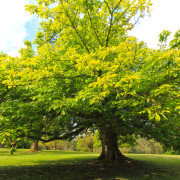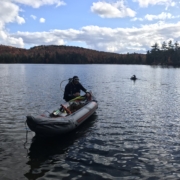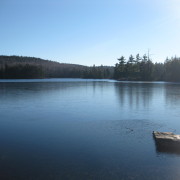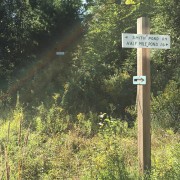Earthworms: The Invasive Species You Didn’t Know About
On March 22nd and April 17th UVLT began a series of events called “Lunch & Learn” where we present a topic in ecology and then follow up with a boots-on-the-ground field trip. This blog post is an excerpt from Vice President of Stewardship and Strategic Initiatives John Roe’s presentation and field trip on Forest Ecology in the Northern Hardwood Forest at Smith Pond Shaker Forest.
Slides from John’s presentation can be found here.
_______________________________________________________________________
When you dig in your garden and see that dark, rich, crumbly earth you think – what lovely soil! When you find worms in your garden, happily decomposing organic material into that dark, nutrient rich soil you think – worms are an indicator of fertile well aerated soil, good for growing things in. In your garden, earthworms are helpful and non-harmful but did you know in the forest earth worms can be deadly?
The earthworms we are accustomed to in the Northeast are not native to North America. North American earthworms all but disappeared from the Northern United States more than 10,000 years ago when retreating glaciers wiped them out. When European settlers arrived on North American shores, so did European (and later Asian) earthworms. The worms arrived in a variety of ways – in root balls of plants, in dry ballast of ships – but arrive they did and they have been here ever since.
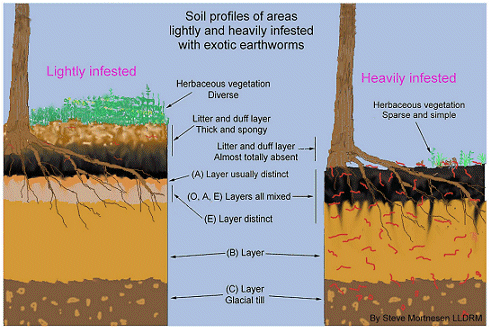
Photo Courtesy of Great Lakes Worm Watch
Let’s talk about glaciers and forests. Our Northern Hardwood Forests were once covered by glaciers. When those glaciers retreated they killed all the native earthworms. With no worms in the soil, the Northern Hardwood Forest developed it’s own unique cycles and functions. Today in the healthy Northern Hardwood Forest, there should be a thick duff layer on the forest floor. This duff layer is made up of spent organic material – decomposing leaves, twigs, bark, and other plant material. This layer holds moisture, prevents erosion, help keeps the forest cool, and acts like a mulch for the forest. It creates a microclimate that supports astounding biodiversity that many plants and animals – including our spring ephemerals, salamanders, beetles, and insects- rely on for survival. The duff layer also acts like a blanket in the winter, protecting the organisms inside and the forest floor below from freezing.
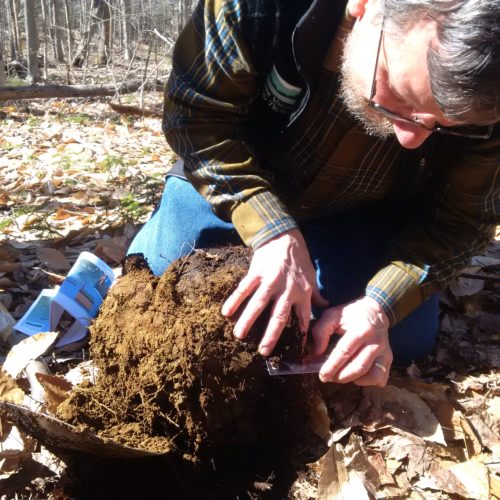
UVLT’s VP of Stewardship and Strategic Initiatives showing a group the depth of healthy soil layers in the Northern Hardwood Forest.
Earthworms remove the organic matter on the forest floor by eating it and mixing it into the mineral soil horizon – the layer below the duff layer and the humus later. This degrades and then eliminates the top layers of soil, until the mineral soil layer is at the top and assumes the processes that used of occur in the duff and humus layers on the forest floor. The degradation and elimination of the organic layers by earthworms can take just 3 to 5 years. When the duff layer is gone many organisms have lost their habitat and food sources. Plant roots have a more difficult time growing in mineral soil than the organic matter layer because it is more densely packed than the duff layer and doesn’t hold air and water in the same way.
But it’s not just a destruction of a unique and vital habitat that makes earthworms so worrisome. The loss of the duff and humus layers means a loss of ecosystem services provided by the Northern Hardwood Forest. Lack of an organic matter layer can leave a forest more prone to erosion. There is a loss of biodiversity within the forest when the habitat is lost and ephemerals and other pants can no longer take root in the soil.
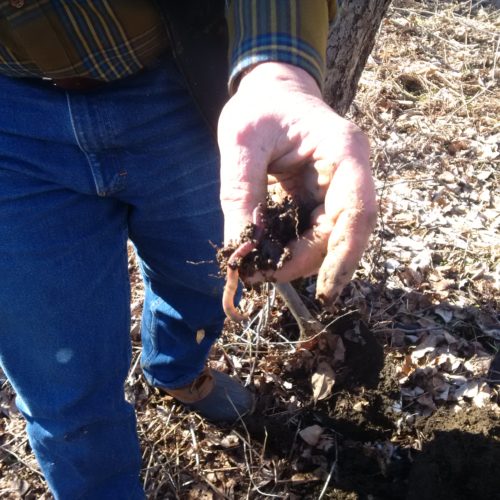
Even someplace as seemingly remote as Smith Pond has been affected by earthworm infiltration. This has likely been caused be people fishing in the area and dumping out their unused worms.
Maybe more importantly we know that soil stores carbon as the organic matter decomposes. When worms consume the organic matter the carbon goes back into the air instead of into the soil. Trees also pull nitrogen out of the air and store it. There is new research showing that a lack of an organic layer on the forest floor may inhibit trees from storing nitrogen in this way, and therefor leaving it in the atmosphere where it may then be deposited into our waterways.
There are currently no methods available to remove earthworms from a site once they have been introduced. It is more important for us to stop the spread of earthworms into our forests as much as possible. Widespread use of earthworms as fishing bait has been an important contributor to the spread of earthworms. No worms marketed as fishing bait are native. If you use worms for fishing, please don’t dump them on the ground or in the water. It’s better to instead put them in the trash.
If you use worms for composting (vermiculture) freeze your compost before using it. This will kill the worms and their eggs. All common compost worms are non-native (eg. red wigglers, Alabama Jumpers, Hybrid wigglers, African Nightcrawlers).
More information about earthworms, their effects on our forests, and what you can do to stop the spread can be found at Great Lakes Worm Watch.

